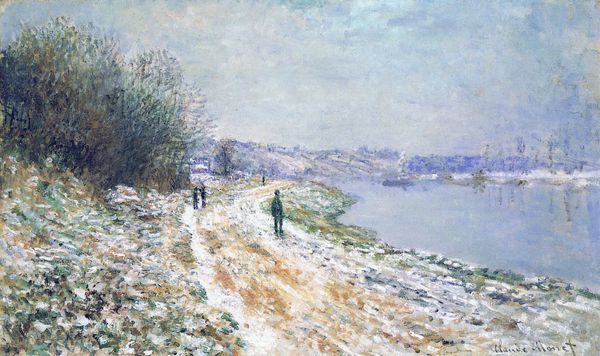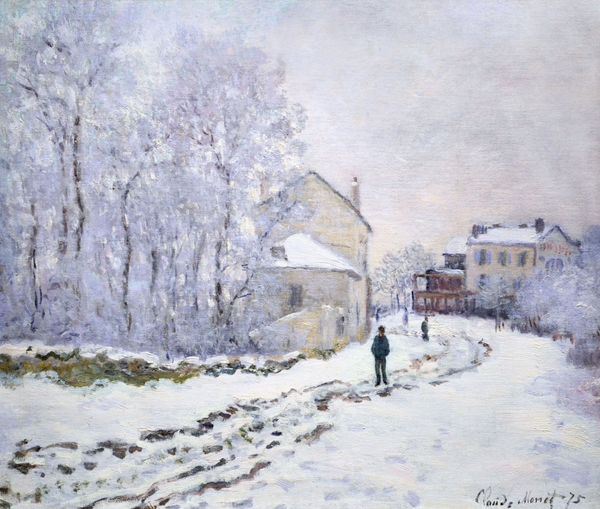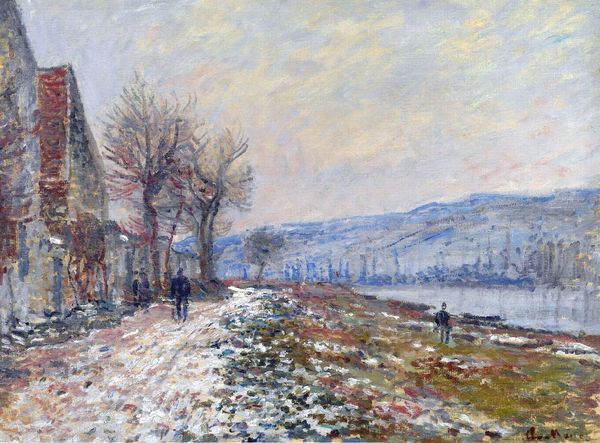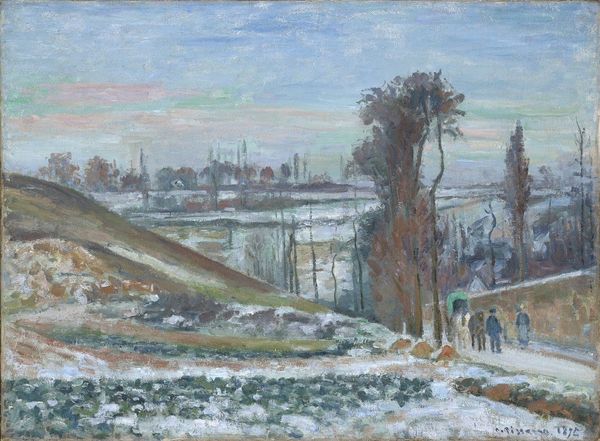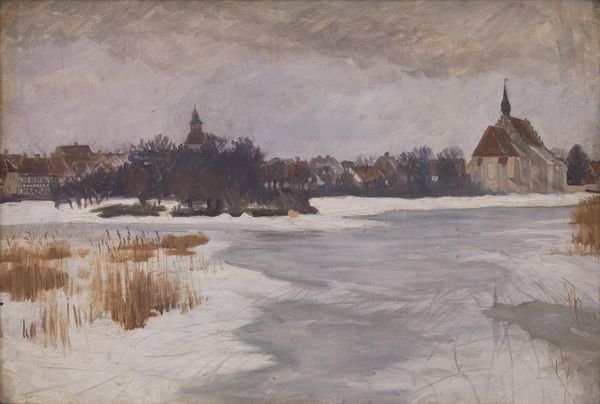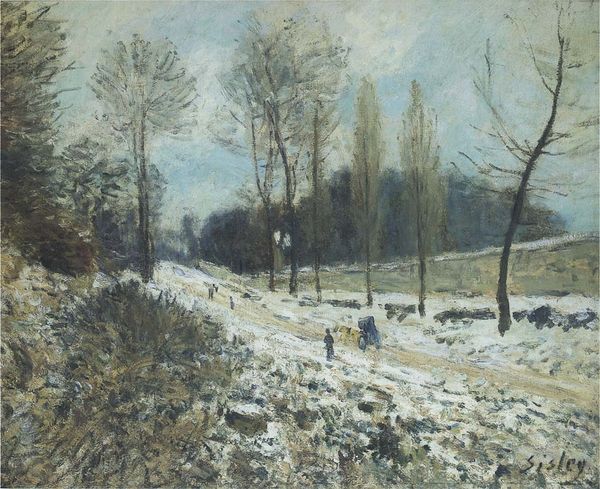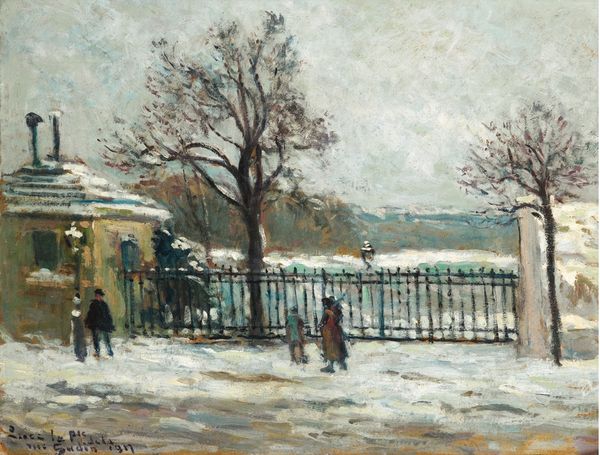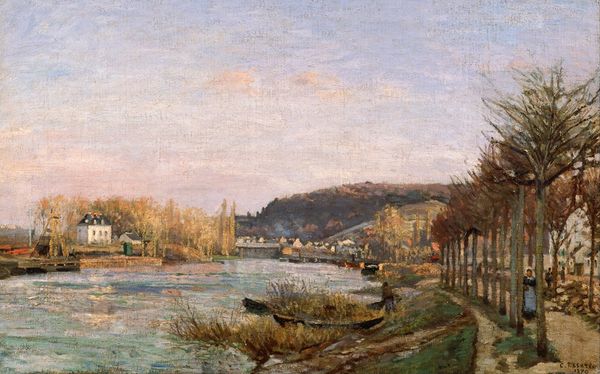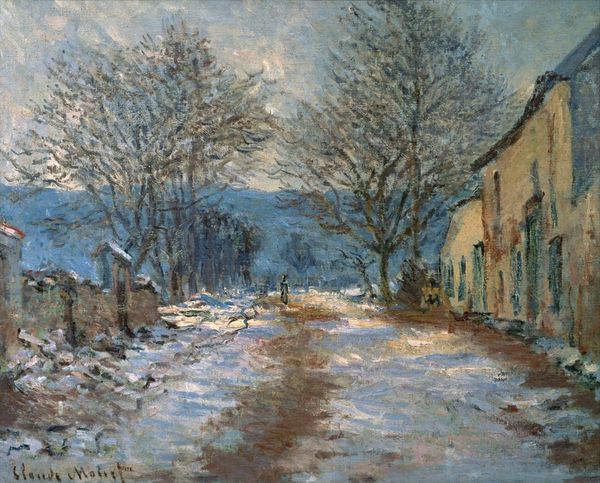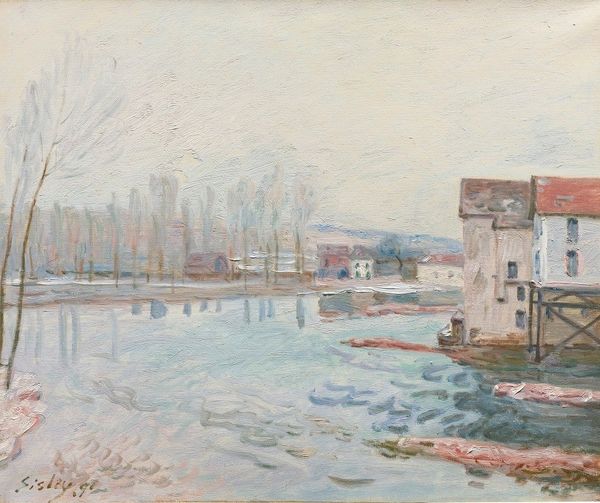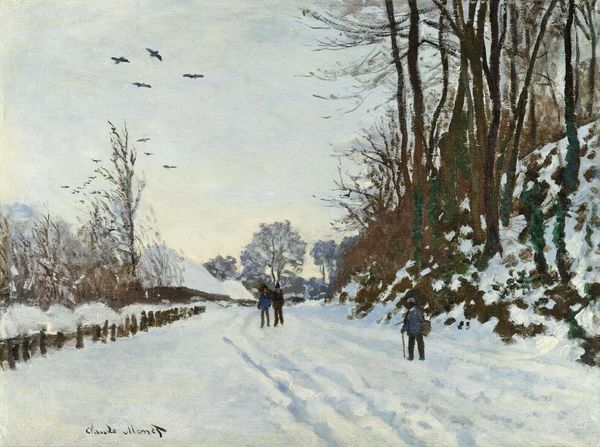
painting, plein-air, oil-paint, impasto
#
painting
#
impressionism
#
plein-air
#
oil-paint
#
landscape
#
impressionist landscape
#
oil painting
#
impasto
#
cityscape
#
monochrome
Copyright: Public Domain: Artvee
Curator: Today we're looking at Claude Monet’s "La Seine à Bougival," painted in 1869. It's an oil on canvas depicting a winter scene along the Seine. Editor: My initial impression is of starkness. The limited palette evokes the muted light of a cold, overcast day. There is something very melancholic in the color composition, but it feels real, genuine. Curator: Indeed. Note the composition itself. Monet uses a receding diagonal line from the bottom left to draw the eye into the depths of the scene. Observe how this structure provides a framework for the almost monochromatic scene. Editor: It makes you wonder, doesn’t it? Water has always represented change and the unconscious in art, and of course, winter is deeply associated with the end, with decay. Considering this, what could Monet be suggesting? Curator: From a purely structural standpoint, look at his use of impasto in the foreground. These thickly applied strokes of paint create texture, mimicking the roughness of the snow-covered ground, which makes for an interesting material interplay with the almost ethereal flatness of the water surface. Editor: But even that technique lends itself to the image's cultural weight. Monet’s fleeting brushstrokes here call to mind the impermanence of winter, the melt to come, the rebirth implied by spring. The smoke rising in the background becomes not merely smoke, but a symbolic offering, a hope of transformation. Curator: You’re making a significant interpretive leap, however the tension between the tangible ground and ephemeral smoke and atmosphere are carefully calibrated here; an exploration of visual oppositions is indeed key. Editor: Maybe the key isn't necessarily one of oppositions, but cycles of completion and rebirth? Even without the artist present, these elements tell us there are familiar cultural landmarks present in Monet's work. It seems that every painting acts as a memory. Curator: And here we have this remarkable synthesis: pure form married to the weight of cultural content. Each glance reveals both meticulous structure and complex emotion. Editor: Well said! Monet’s masterful juxtaposition of color and technique grants a visual expression to a profound experience of winter in all of its cold clarity.
Comments
No comments
Be the first to comment and join the conversation on the ultimate creative platform.
